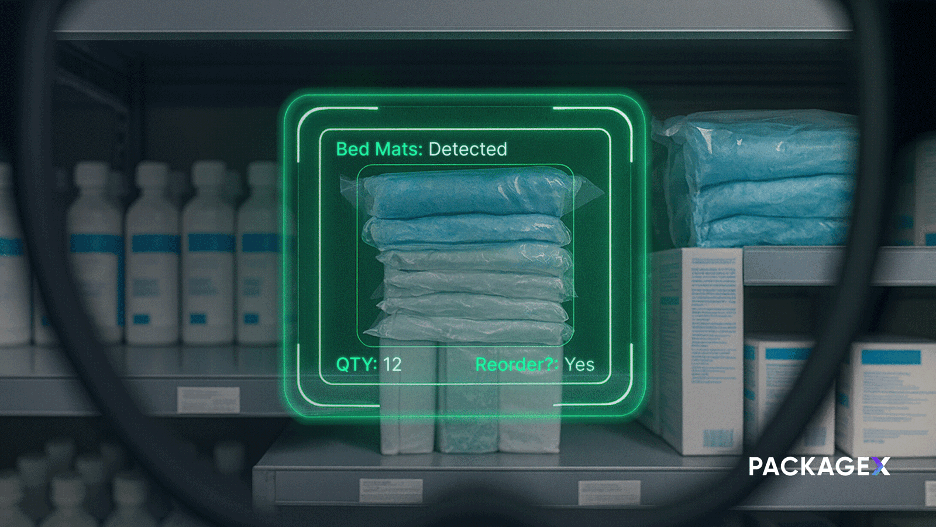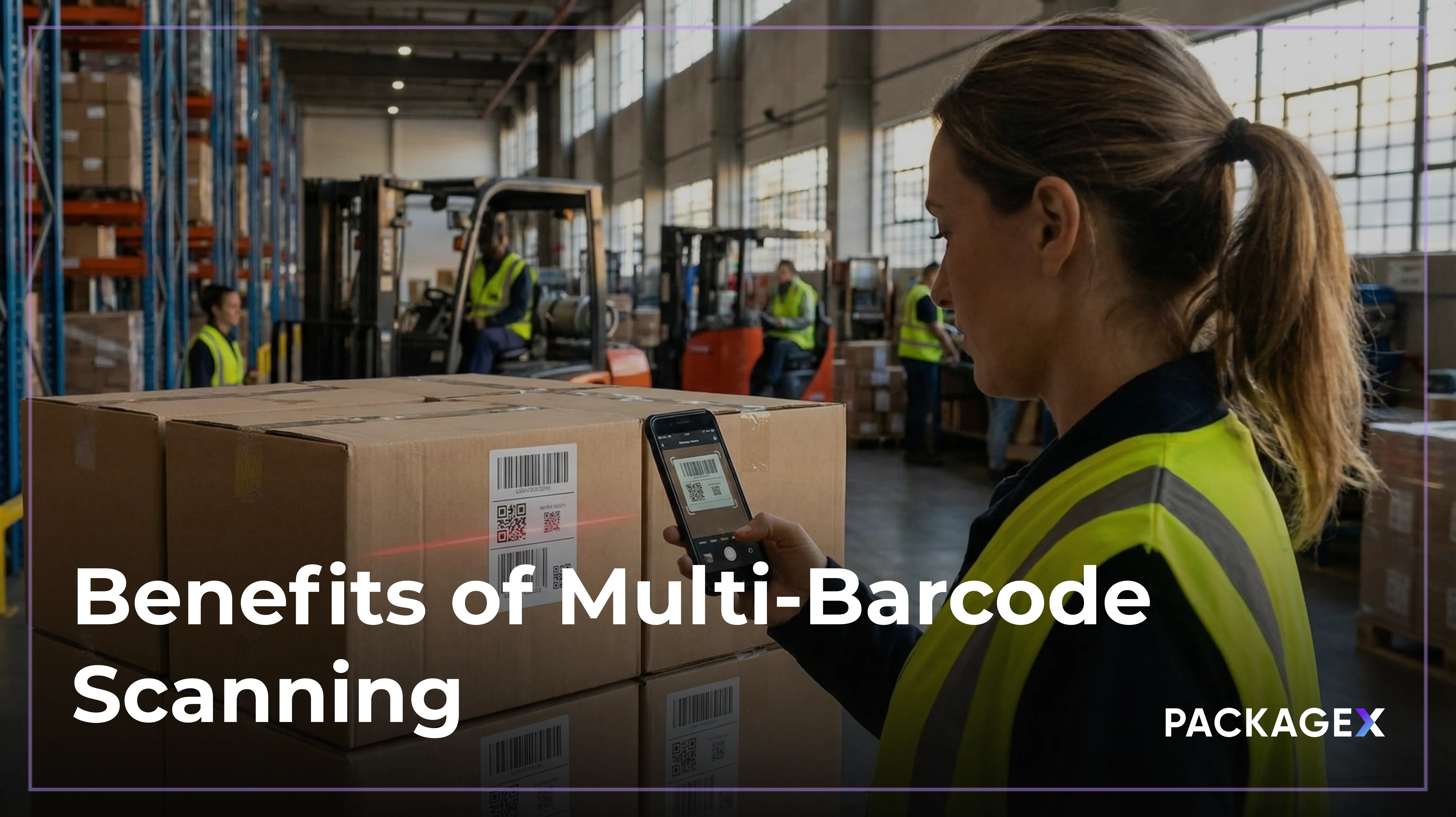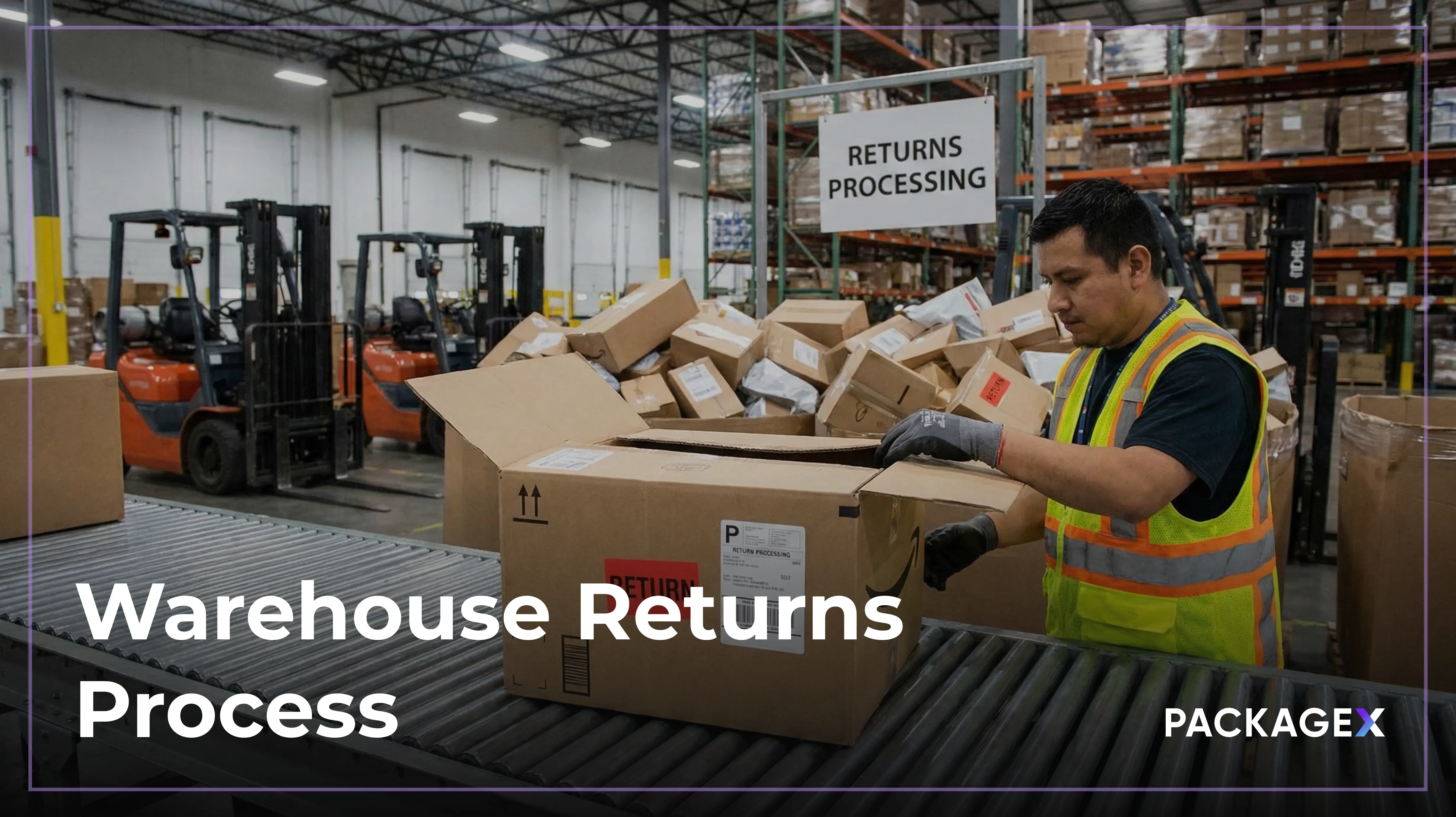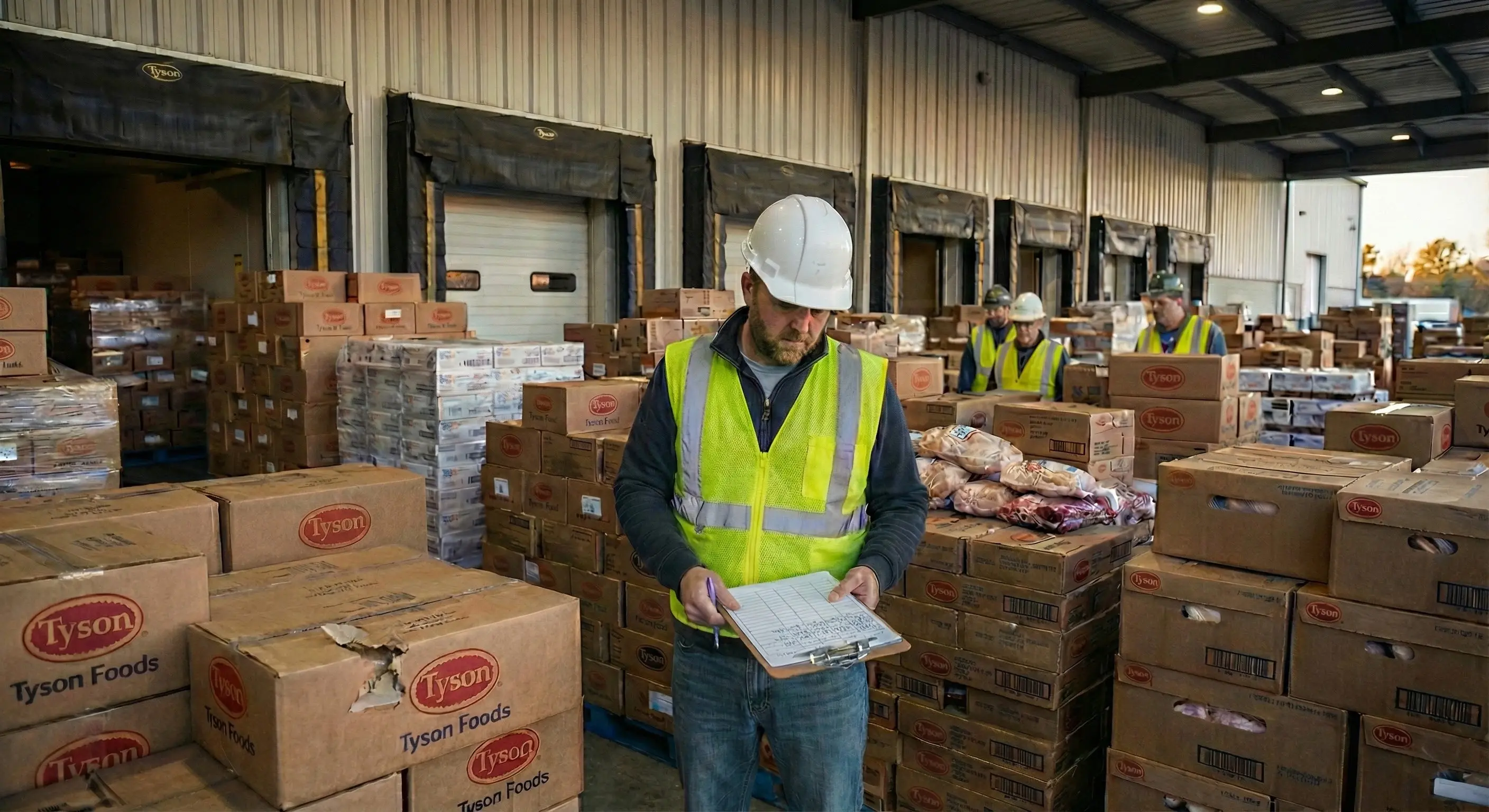On any given day hospitals across the U.S. face critical supply chain blind spots, from urgently recalled medical devices to time-sensitive surgical supplies. Despite billions invested in hospital ERPs and healthcare supply chain management software, the simple act of pinpointing where high-risk supplies are located remains a daily challenge. When a nationwide recall hits, many hospitals still struggle to identify affected products and locations quickly, risking canceled surgeries, patient safety, and regulatory compliance
"Once a package is dropped into our supply system, it becomes a black box…We don't know where it is until someone calls about a missing item, or in this case, until we have to cancel surgeries."
For medical device manufacturers this scenario represents a nightmare beyond operational inefficiency, it's a direct threat to patient outcomes and device efficacy. When your life-saving cardiovascular devices, neurological implants, or surgical instruments disappear into hospital "black boxes," the impact extends far beyond logistics costs to patient safety and clinical outcomes.
This scenario, playing out across healthcare facilities nationwide, reveals a stunning truth: despite billions invested in hospital ERPs and healthcare supply chain management software, the simple act of tracking supplies from dock to delivery remains fundamentally broken.
But AI is finally changing that story.
What Is Healthcare Logistics?
Healthcare logistics refers to the movement, tracking, and management of medical supplies, pharmaceuticals, and equipment from manufacturers to healthcare facilities and ultimately to patients. It encompasses everything from inbound receiving at hospital docks to internal routing between departments, floors, and operating rooms.
Unlike traditional logistics, healthcare supply chains operate under unique pressures. A typical hospital receives 300-700 packages daily, many containing temperature-sensitive medications, time-critical surgical supplies, or life-saving devices.
For medical device tracking companies, this means your precision-engineered products, whether it's a pacemaker, surgical robot component, or diagnostic equipment, face the same tracking failures as basic office supplies.
When these systems fail, patients wait. Sometimes, surgeries get delayed. The stakes couldn't be higher.
Role of AI in Healthcare
Most discussions about AI in healthcare focus on diagnostics, patient care, or clinical decision-making. AI in healthcare can now read medical images with 95% accuracy, predict patient deterioration hours before symptoms appear, and even assist surgeons during complex procedures.
But there's a quieter revolution happening in the places patients never see, hospital loading docks, supply closets, and receiving departments. Computer vision and AI scanning is transforming how healthcare facilities handle the most basic, yet critical, task of getting the right supplies to the right place at the right time.
For medical device manufacturers, this transformation is particularly crucial. Your products often require:
- Precise temperature control (insulin pumps, biologics)
- Sterility maintenance (surgical instruments, implants)
- Immediate accessibility (emergency cardiac devices)
- Tracking for recalls (essential for patient safety)
Current AI applications in healthcare logistics include:
- Label parsing and data extraction from damaged or unclear shipping labels
- Real-time inventory management using computer vision in healthcare instead of barcode scanning
- Predictive analytics for demand forecasting and supply optimization
- Smart routing algorithms that direct packages based on urgency and location
- Chain of custody documentation with real-time visibility from dock to delivery
Broken Hospital Receiving Workflows
When a delivery truck arrives at a hospital, here's the reality of what happens, and the specific challenges this creates for medical device shipments:
Step 1: The Label Hunt. Workers manually scan packages, squinting at labels with fonts so small that some facilities keep magnifying glasses at receiving stations. Mail codes are missing or illegible. Recipient names don't match the hospital directory.
Step 2: The Manual Data Entry. Staff manually enter PO numbers, recipient names, and delivery locations. At 3-5 minutes per package, a single worker processing 200 packages burns through 10-16 hours of labor, every single day. Critical device information gets lost or mistyped, breaking traceability chains.
Step 3: The Black Box. Packages get loaded onto carts and wheeled into the hospital's interior. From that moment until someone calls looking for a missing item, there's zero visibility into location, status, or chain of custody.
Step 4: The Search. When a package goes missing, which happens daily, staff spend additional hours searching carts, storage areas, and departments. Meanwhile, surgeries get delayed, devices expire unused, and recall notifications become impossible to execute.
This broken workflow is part of a much larger crisis. A comprehensive study published in JAMA found that waste in the U.S. healthcare system ranges from $760 billion to $935 billion annually, representing 25% of healthcare spending.
For medical device manufacturers, this represents both a massive cost burden and a patient safety risk that extends far beyond the hospital walls.
Computer Vision Solves What Barcodes Can't
Traditional barcode scanning fails when labels are damaged, poorly printed, or covered by tape. Computer vision in healthcare doesn't have these limitations.
AI-powered systems can:
Extract data from any part of the label, regardless of format, placement, or condition. Whether the PO number is in the shipping address, reference field, or handwritten on the side of the box, computer vision finds and captures it.
Parse multiple data types simultaneously, pulling recipient names, mail codes, department numbers, and special handling instructions in a single scan, no manual data entry required.
Integrate with existing ERP systems feeding clean, structured data back into the hospital's system of record without requiring expensive software replacements.
Create automatic chain of custody logs, documenting who scanned what package, when, and where, providing full visibility from receiving dock to last-mile delivery.
Route packages intelligently based on hospital-specific metadata like floor numbers, department codes, or urgency levels (surgery vs. general supplies).
This isn't just about scanning efficiency. It's about giving hospitals x-ray vision into their own supply chains.
Real-World Impact
The consequences of broken hospital logistics aren't just theoretical. Recent industry reports reveal the true cost:
Surgery Cancellations: MultiCare Good Samaritan Hospital was forced to cancel over 140 elective surgeries after discovering plastic contamination in surgical trays, a problem that real-time supply tracking could have prevented.
Manual Chaos: Healthcare workers report ending surgeries with "piles of packaging that they are unable to successfully scan," with barcodes that don't capture full data and SKUs that don't match inventory systems.
Labor Crisis: With receiving staff averaging just 1-2 years tenure due to frustrating manual processes, hospitals face constant training costs and knowledge loss.
Financial Impact: The healthcare industry wastes an estimated $25.7 billion annually on unnecessary supply chain expenditures, much of it tied to poor visibility and manual tracking errors.
Computer vision addresses each of these problems directly:
Prevention Over Reaction: Real-time contamination detection and batch tracking prevent widespread recalls from reaching operating rooms.
Automated Documentation: Eliminate the "pile of unscanned packaging" by capturing all supply data automatically, regardless of label condition.
Staff Empowerment: Reduce manual frustration by giving workers tools that actually work, improving retention and job satisfaction.
Cost Recovery: Transform the 3-5 minutes of manual processing per package into automated workflows that scale across entire hospital networks, contributing to the reduction of nearly $1 trillion in annual healthcare waste.
Why Your ERP Won't Fix This Alone
Enterprise Resource Planning systems excel at procurement, accounting, and high-level inventory management. But they weren't designed for dock-level operations.
Here's what ERPs can't do:
- Scan or parse shipping labels dynamically
- Provide real-time chain of custody tracking
- Route packages based on hospital-specific location metadata
- Integrate physical receiving workflows with digital records
AI-powered logistics platforms act as a bridge, capturing physical-world data and feeding it into existing ERP systems. This approach doesn't require "ripping and replacing" expensive software investments. Instead, it enhances them with capabilities they were never designed to handle.
Hospitals get the best of both worlds, proven ERP functionality for back-office operations and intelligent automation for front-line logistics.
What's Next for Healthcare Logistics
The future of healthcare supply chains is already taking shape:
AI-first receiving workflows that eliminate barcode dependency and manual data entry
Predictive routing algorithms that anticipate delivery needs based on patient census and surgical schedules
Integrated compliance systems that automatically generate audit trails for regulatory reporting
Real-time visibility dashboards that give healthcare supply chain visibility that helps managers to get X-ray vision into every package, cart, and storage location
Leading health systems are moving beyond pilot programs to full-scale deployments. The question isn't whether AI will transform healthcare logistics, it's how quickly hospitals can adapt to stay competitive.
For medical device manufacturers, this transformation represents an opportunity to:
- Enhance customer relationships by helping hospitals manage their products more effectively
- Improve regulatory compliance through automated chain of custody documentation
- Reduce warranty costs by preventing device mishandling and expiration
- Accelerate market access through more efficient hospital adoption processes
The Bottom Line
Every day, thousands of packages disappear into hospital "black boxes", lost between receiving docks and patient care areas. This isn't just an operational inefficiency. It's a patient safety issue disguised as a logistics problem.
FAQs
How is AI used in healthcare logistics?
AI is used to scan and extract information from package labels, automate receiving workflows, track delivery status in real-time, and integrate data into ERP systems without manual data entry.
What is healthcare logistics?
Healthcare logistics is the system of receiving, tracking, and routing medical supplies, medications, and equipment throughout hospitals and healthcare systems—from manufacturer to patient.
Why is healthcare logistics important?
Delays or errors in healthcare logistics can disrupt surgeries, delay medication delivery, and impact patient care. Real-time visibility and accuracy are critical to clinical operations.
How does computer vision improve hospital receiving?
omputer vision can extract data from damaged or unclear labels, eliminate manual data entry, provide real-time package tracking, and integrate with existing ERP systems to create end-to-end logistics visibility.
Ready to bring visibility to your hospital supply chain? Discover how PackageX transforms hospital logistics with AI-powered receiving and routing solutions.




